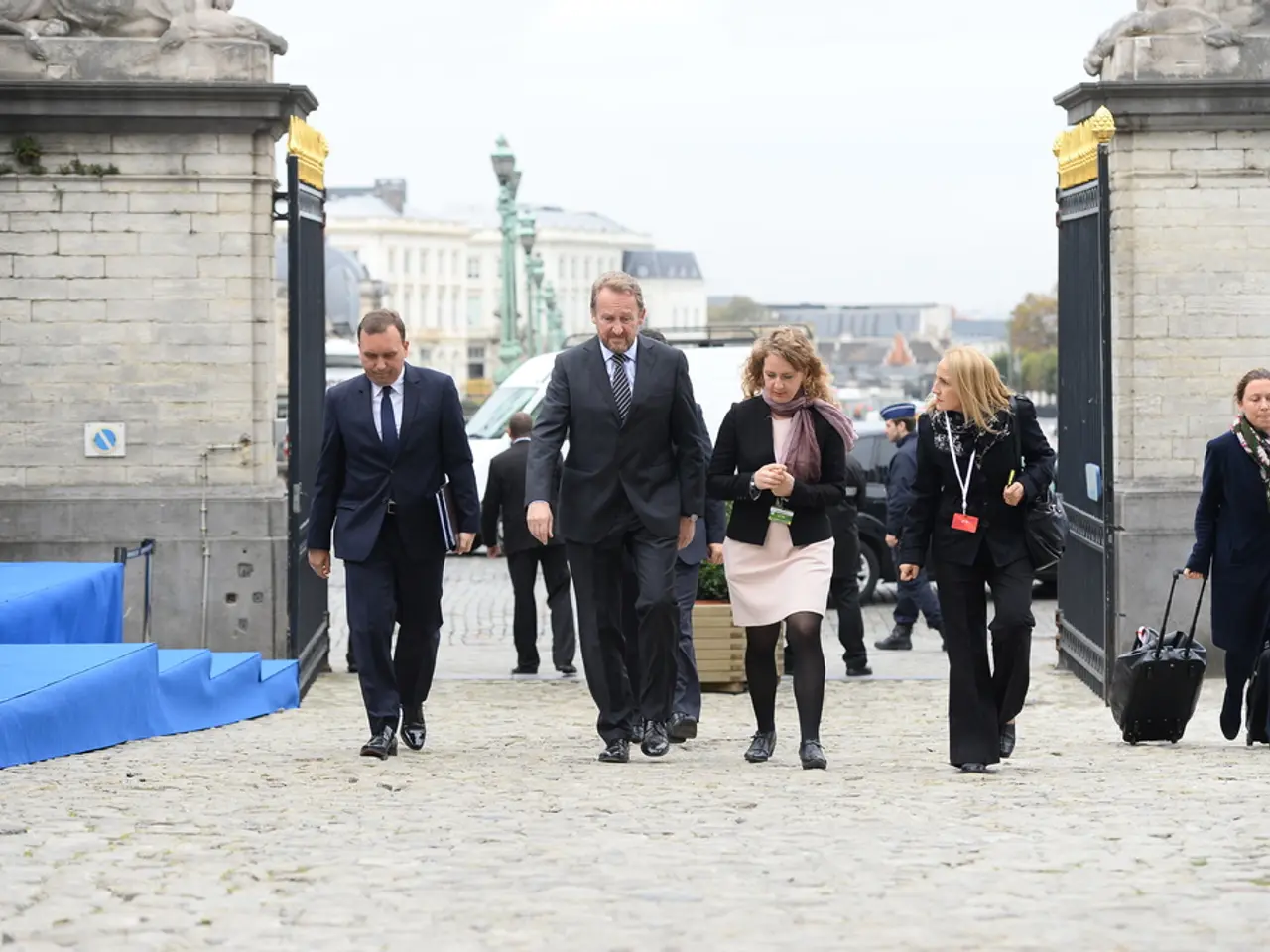Ready for Assertive Measures: ECB Braces for Aggressive Intervention in a Volatile Inflation Climate
The European Central Bank (ECB) has unveiled a new strategy that anticipates five more years of economic upheaval, as the euro area grapples with a myriad of disruptions from geopolitical rifts, technological advancements, and other factors.
In a shift from its previous strategy, the ECB's new approach emphasises a more cautious approach to quantitative easing, with a higher bar for future bond buying, or quantitative easing (QE), as a growing number of policymakers within the ECB's hawkish camp signal this change.
The ECB's Chief Economist, Philip Lane, presented the new strategy, which focuses on the need for "appropriately forceful or persistent monetary policy action" in response to large, sustained deviations of inflation from the target in either direction. This move aims to maintain the symmetry of the target and address the complex inflation dynamics that persist despite improvements.
The ECB's expectations of prolonged economic upheaval are rooted in several key factors. Moderate and slowing economic growth, inflation challenges, and policy uncertainties are expected to persist for several years. The euro area's growth forecasts have been revised down to about 0.9% in 2025, 1.2% in 2026, and 1.3% in 2027, reflecting weaker export activity, ongoing investment challenges, and heightened trade policy uncertainties.
Inflation dynamics are improving but remain complex. Headline inflation is expected to average around 2.0% in 2025, with a gradual easing of core inflation as wage growth moderates. However, inflation varies widely across member states and is influenced by volatile energy prices and currency fluctuations.
Trade uncertainty and geopolitical factors continue to weigh on the economic environment, impacting business confidence, investment decisions, and consumer demand. These factors, along with labor market resilience and real wage growth, support consumer spending, but these gains are only partially offsetting investment shortfalls and structural economic challenges.
Public investment and government spending provide some support, but they do not fully compensate for broader economic headwinds. The ECB's data-dependent and cautious monetary policy approach, without a preset path for rate moves, indicates a recognition of ongoing uncertainty, including risks from external shocks, inflation variability, and growth volatility.
The ECB is also taking steps to mitigate the potential side effects of its asset-purchase programmes in the future. The bank will conduct scenario analysis before launching new asset-purchase schemes and will closely examine the potential impacts of these programmes.
The ECB's new strategy comes after a period of economic volatility, including concerns about deflation during the pandemic and a cost-of-living crisis due to the invasion of Ukraine and trade disruptions. The bank's previous strategy statement, published in 2021, was mostly focused on the risk of price growth getting stuck at low levels, a mistake that some central bankers now see as a misstep.
The ECB has pledged to react with equal vigor when inflation is too high as when it is too low, adjusting its policy after being caught off guard by a surge in prices in 2021-22. The bank raised its key interest rate from -0.5% in 2022 to 4.0% over a year later to curb runaway prices, and has since cut it back to 2%. The ECB expects to pause its key interest rate at least until September.
Luis de Guindos, the ECB's vice-president, stated that the euro zone's central bank had now learned more about QE's side effects, a reference to the criticism that the ECB's asset-purchase programme has been blamed for causing a bubble in financial and property markets and for causing massive losses at the ECB and its shareholding central banks once interest rates rose.
Despite these challenges, the ECB's global head of macro, Carsten Brzeski, described the tone of the new strategy as less introspective and more of a reaffirmation that the ECB was on the right track. The ECB's Governing Council had some policymakers advocating for more introspection about the bank's ultra-easy policy of the last decade, but the new strategy contained little criticism.
In conclusion, the ECB's new strategy reflects a recognition of the complex and uncertain economic environment facing the euro area. The bank's cautious approach to monetary policy and its commitment to addressing inflation challenges are key elements of this strategy, which anticipates five more years of economic upheaval amidst geopolitical tensions and technological disruptions.
- The ECB's new strategy, centered on monetary policy, acknowledges the necessity for "appropriately forceful or persistent" action to counteract inflation deviations.
- Amidst a backdrop of economic challenges, the ECB has revised down its growth forecasts for the euro area, anticipating slow growth and ongoing policy uncertainties that persist for several years.
- Business and consumer confidence are impacted by prolonged trade uncertainty and geopolitical factors, such as ongoing policy uncertainties and heightened trade disruptions.
- In an effort to mitigate potential side effects of its asset-purchase programs, the ECB will conduct scenario analysis before initiating new schemes and closely examine their potential impacts.




